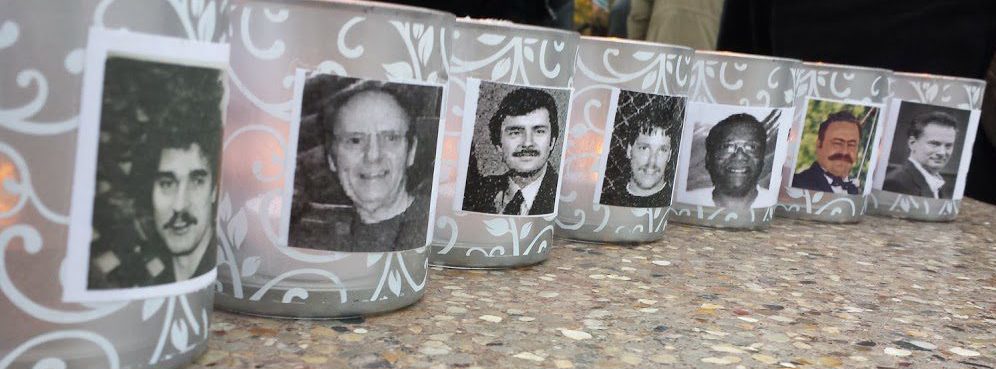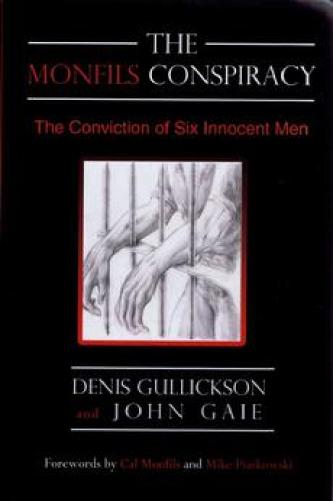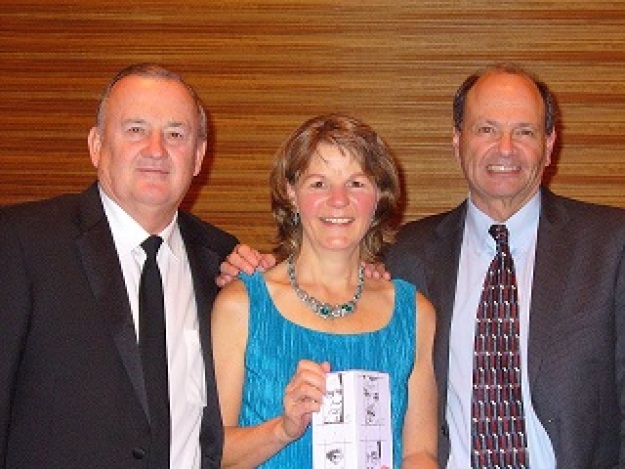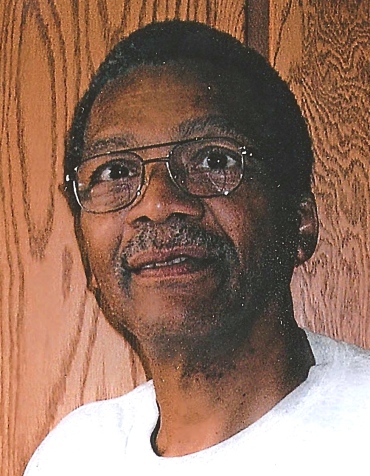On July 8, 2015 I attended a hearing in Green Bay, WI regarding a two decades old court case in which six men were convicted of murder in the death of co-worker, Tom Monfils. Back in 1995 the State questioned witnesses about an alleged confrontation that led to a beating and then murder. All six defendants were ultimately found guilty and sentenced to life in prison. Five of them remain behind bars today and have been incarcerated for twenty+ years, though one of them was exonerated in 2001 by a federal judge who cited a lack of evidence to convict him.
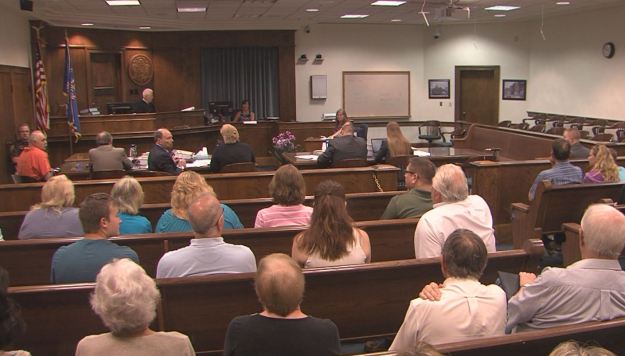
Brown County courtroom during Keith Kutska’s evidentiary hearing
Last week we heard from a new Minneapolis/Wisconsin legal defense team that is convinced that all six of the men are, in fact, innocent. With resistance from the State, there was compelling evidence presented that strongly suggests suicide. However, it is not the intent of this defense team to simply prove it was suicide but to create sufficient reasonable doubt that if this evidence had been presented at the original trial, it could have provided a different outcome for the defendants. The team has worked diligently for the past two years compiling new facts they feel should compel the courts to grant a new trial for Keith Kutska. Kutsa is considered the “ring leader” of a mob that allegedly participated in carrying out this tragic death. The hope is that this petition will prompt exonerations across the board for all of the men.
I’ve summarized much of what was covered during two days of testimony, with the help of my husband, Mike, the exoneree in the case, Michael Piaskowski, retired crime scene expert, Johnny Johnson, and our lead attorney on the case.
The title of the piece reflects the many objections throughout this hearing asserted by the prosecution. Ironically, it was exactly that which was rampant during the original trial but was not successfully objected to by any of the defense attorneys.
I’ve provided what I believe will give you a true sense of the egregiousness of this entire case.
Evidentiary hearing for Keith Kutska July 8-9, 2015
Day one:
9:00 a.m. – Two objections by DA David Lasee:
- Discussion about whether to sequester expert witness, attorney Steve Glynn, or allow his presence in courtroom before he testifies. Glynn was then escorted outside.
- Objection to a last-minute motion admitting testimony for the following day by retired coast guard and former merchant marine George Jansen. Ruling was in favor of the defense.
9:20 a.m. – First witness:
Dr. Mary Ann Sens – Licensed forensic pathologist and chair of pathology for the University of South Dakota. Has been in practice since 1982 and has performed between three thousand and four thousand autopsies (one thousand–plus autopsies involving suicide).
Her conclusion regarding the cause of death of Tom Monfils: “Undetermined”
Condition of the body presented challenges. Evidence proved Tom was alive and still breathing after entering the vat. A police detail sheet was presented showing Dr. Young, the original medical examiner, making a determination shortly after the completion of the autopsy that the death was a homicide and could not have been a suicide. It was the opinion of Dr. Sens that, given the circumstances, Young could not have made that determination because it was impossible to recognize possible injury vs. decomposition due to deterioration, swelling, and discoloration of the body. Also, rapid deterioration of a body happens when submerged in liquid, and then removed. There was no way to determine the exact moment when the death occurred, or if all the premortem injuries listed in the original report were caused before or after entering the vat. A solid conclusion as to a cause of Tom’s death could not have been determined based on the autopsy. It required necessary toxicology tests and additional investigation by police, etc. In this case, it might not ever be possible to determine cause of death.
She told DA Lasee she agreed with how Dr. Young conducted the autopsy, but that she would have also weighed the organs. Discussion ensued about how current advances in science allow for different conclusions to be made. DA Lasee pressed that having another expert do an autopsy back then would not have necessarily garnered a different conclusion. Dr. Sens agreed a pathologist might have agreed with Dr. Young regarding which injuries were suffered before death and which were suffered after it. However, Dr. Sens made it clear that all premortem injuries could have been inflicted in the vat.
11:30 a.m. – Second witness:
Attorney Royce Finne – Former assistant DA in Brown County 1977–87. Has focused on criminal cases and did approximately a dozen homicide cases. As an attorney, he has worked on prior cases with Detective Randy Winkler. He was Keith Kutska’s first attorney in the Monfils case.
Finne never saw autopsy photos nor consulted a forensic pathologist to challenge the autopsy. He was satisfied with Dr. Young’s conclusions and felt the autopsy report was accurate. He believed Tom was murdered. He had no recollection of the other attorneys consulting a forensic pathologist. Was asked about his obligations to his client as defense attorney, and he responded by saying it was to defend his client as best as he could. Finne was shown a number of photos regarding the blade impressions and was asked if he ever brought them to a specialist. He did not. He did not attend all the civil trial depositions even though he was representing Keith. Finne had inquired if police looked to see if there was blood evidence, but hired no experts to review evidence regarding blood and knots. He was not aware of a deal for David Weiner’s testimony. In conclusion, he indicated he did the best he could, but did not question coroner’s results that a homicide occurred. He believed a beating had occurred, but not by his client. He said all the attorneys believed someone else did it.
Finne told Lasee he felt all the attorneys were competent. He did not investigate suicide. He felt he could not prove this was a suicide and would not be able to find anyone to disprove the autopsy.
1:30 p.m. – Third witness:
Attorney James Connell – Practicing attorney for forty years. He retired in 2014. Did criminal trial work and represented Kutska in post-conviction, and on an appeal.
He hired a private investigator to investigate Randy Winkler, David Weiner, and Brian Kellner. He did not consult or hire any expert witnesses. He knew the body was “mangled” but was not aware of the extent of its decomposition. He felt either Weiner murdered Tom Monfils, or that someone within the mill must have committed the murder. He never agreed with the State’s timeline of when the death occurred. He did not believe Weiner’s testimony was credible and asked him about a deal. Weiner responded there was none. He thought Weiner knew he was doing something that would get him out early, and he believes Weiner lied at the post-conviction hearing in 1997. Connell did not interview other mill workers regarding a suicide theory and didn’t raise the issue of the ineffectiveness of Kutska’s trial counsel. He thought all the attorneys were sufficient in their client representation. He went to many of the appeals and there was never any mention of suicide. He concluded Finne did a reasonable or good job in defending Kutska.
Steve brought up a matter involving a Brady rule violation. Under the United States Supreme Court case of Brady v. Maryland (1963), the prosecution must voluntarily disclose material favorable to the defendant in a criminal case that is known by the State. Steve was referring to a letter he argued was not disclosed to the original defense. The letter was from an attorney representing Weiner referring to a deal between Weiner and the DA’s office for his testimony at trial. An objection was raised about its authenticity, and the letter was regarded as hearsay. It wasn’t admitted but was placed in the record under an “offer of proof.”
2:30 p.m. – Fourth witness:
Attorney Stephen Glynn – Criminal defense attorney for forty-two years in Wisconsin. Helped with post-conviction appeals and has been involved with the Wisconsin Innocence Project. He has worked on approximately forty homicide cases with jury trials and on direct appeals for other serious felonies.
Glynn reviewed both Finne’s and Connell’s materials in the Monfils case and prepared a report regarding Keith’s legal counsel. Larry Lasee objected to the report, which was overruled. Lasee then moved to strike related testimony, and it was also overruled.
Glynn testified about the duties of legal counsel to aggressively investigate all avenues of evidence for clients, including retaining experts to create reasonable doubt, especially in homicide cases where life in prison is the most serious penalty allowed under Wisconsin law. He felt failures of the defense counsel undermined the trial and that Kutska, as well as the others, did not receive adequate representation. There was much discussion on a final determination of homicide versus suicide and how the trial could have been different. Counsel should have investigated Tom’s mental state, coast guard experience, and family problems. The suicide theory would have explained a lack of blood near the bubbler. A short discussion arose about the prosecution’s argument that washing away the blood was effective in ridding the area of any residue. Glynn stated this was not accurate due to the effectiveness of luminal (black light) testing and its capacity to expose residue left behind. Glynn referred to a commonly known acronym among defense lawyers called the SODDI defense (Some Other Dude Did It), and why defense counsel’s resort to it was doomed in this case.
DA Lasee objected to Glynn’s statement regarding luminal testing. It was stricken from the judge’s record.
Glynn stated Kutska’s appellate counsel was also negligent and should have brought up the deficiencies of trial counsel. A discussion between DA Lasee and Glynn ensued when Lasee questioned Glynn’s conclusions regarding the ineffectiveness of upward of twenty attorneys involved in the entire case. Glynn stood firm in his assessment and added his opinion, which was that had the case been tried differently, “I don’t think this case would have resulted in guilty verdicts, and I would bet money on it!”
3:55 p.m. – Fifth witness:
Ardis (Ardie) Kutska – Kutska’s former wife.
Ardie testified she and Keith were friends with Verna and Brian Kellner, and were with them at the Fox Den Bar on the evening of the alleged reenactment by her husband, Keith, of a bubbler incident in which the six men allegedly beat up Tom Monfils. Ardie said there was no reenactment. When asked by Steve if she had been asked to testify at the trial, she stated she was not, and was told by Keith’s lawyer that no one would believe her. She talked about Brian Kellner’s character and said he was “a nice guy, but I think he wanted people to, I don’t know, he wanted to make people like him or be important to everybody.” Discussion took place about Ardie’s many conversations with Keith about the case. Keith first believed Tom took his own life, but was later convinced it was a murder after he read the autopsy report of the forensic pathologist. Keith did not have any idea of who committed the murder.
Hearing concludes for the day.
Day Two:
9:05 a.m. – Sixth witness:
Amanda Williams – Daughter of Verna and Brian Kellner. Also has an older brother, Earl. She could not recall if her parents were going through a divorce or reconciliation during the investigation, but the primary caregiver was her father. She was thirteen years old between the fall of 1994–95, and knew the Kutskas as close family friends. She looked up to Keith as a father figure and recalled when he had colored with her when she was young.
The DA objected to Amanda’s testimony about an experience she had with Det. Randy Winkler. This action was overruled, and her description of the incident was as follows:
Amanda recalled being questioned by Winkler after getting off the school bus and spending a few hours with him during the Monfils investigation. She had been asked by him about her knowledge of the case. He asked if she wanted to stay living in the house with her dad or if she would rather live with her mom. She said she felt she was her dad’s little girl. When asked if she felt threatened by Winkler, she described physically backing away from him and his immediate and direct advancement toward her. He kept pushing her for answers. Winkler told her if her dad did not cooperate he would be in a lot of trouble. She felt this meant he would go to jail. She was told by her dad to be mindful of whom she talked to and what she said. She described her dad as being stressed about personal problems. The Kellners changed phone numbers a lot and moved. Her dad told her he was being watched by the police, and she said they would see cars sitting outside.
Amanda talked about a woman who appeared at her school one day and introduced herself as a social worker. Amanda said this experience felt weird and that the woman produced no ID. It bothered Amanda that she acted cold. The woman took her to the police station and left her in a room. She was eventually allowed to go home. She later told her dad about it and he fell silent. Amanda explained her dad would get quiet when he was upset. Amanda said her father felt threatened by law enforcement to make certain statements that supported the lead investigators’ theory that Monfils was murdered. Kellner finally agreed to make the statements demanded of him. Kellner later said those statements were false.
Judge states he considers all this testimony as inadmissible hearsay.
Amanda told the DA she had shared all this information with Finne. She does not know who the woman was who picked her up, but describes her as having tight curls and glasses. She believed, and still feels, Tom Monfils committed suicide.
DA suggested to Amanda that her life is better because her dad decided to recant his testimony about the Fox Den Bar reenactment and cooperate with defense counsel. Amanda proceeded to lecture the prosecution on the pain that this experience had brought her and how it has not made her life better.
9:35 a.m. – Seventh witness:
Attorney John Lundquist – Has practiced law in both Minnesota and Wisconsin for thirty-seven years. He has concentrated on criminal and regulatory defense and is a certified criminal defense specialist. He acts as general counsel at Fredrikson & Byron, PA in Minneapolis. He interviewed Brian Kellner in the fall of 2014.
Before questioning begins, DA objects to Lundquist’s testimony as hearsay. Steve argues it is adverse to Kellner’s interests and social standing. There is much discussion regarding the relevance and admissibility of Brian’s unsigned affidavit. It is accepted.
In February 2014, Lundquist met with Brian Kellner at Mike Piaskowski’s house to discuss his statement. Piaskowski was not present during the discussion. Kellner told Lundquist the Fox Den incident did not occur and that it was complete fiction. Lundquist asked Kellner if he would be willing to sign an affidavit regarding their discussion. Kellner said he would. Lundquist prepared the affidavit and was on his way to meet with Kellner in Green Bay to have him sign the document. Just east of Wausau on Highway 29, Lundquist received a phone call informing him Kellner had passed away earlier that day.
DA Lasee asked Lundquist if Kellner had ever seen the prepared affidavit. Lundquist replied, “He did not.”
10:03 a.m. – Eighth witness:
Cal Monfils – The younger (ten years) brother of the decedent, Tom Monfils.
Cal felt close to his brother and stated they never had a falling out. He looked to Tom with great respect, but said Tom was judgmental. They shared a room after Tom returned home from four years in the coast guard. Cal talked about Tom’s temper and how he would react by going off alone to cool off. He described how his brother would always tie knots. Cal was shown photos of the knots tied to the weight found with Tom’s body and described them as knots he saw his brother tie. Cal recalled a conversation he had with Winkler regarding the knots tied around Tom’s neck and to the weight. He told Winkler those knots looked like knots his brother would have tied. He said Winkler assured him they had already looked into this, and determined the knots were not Tom’s. Cal felt these photos were important because they represented the only evidence the prosecution had. Cal was asked about Tom’s marriage, and he said it was “different.” He said Tom would do many of the chores at home. Cal did not know if Tom and his wife, Susan, were in marriage counseling. Both their father and uncle had retired from the mill, and Cal knew Tom considered his job a large part of his life.
DA objected to Cal’s comments about what he heard from Susan. Steve made an offer of proof. Testimony was allowed to continue.
Cal recalled that shortly after the body was found, Susan had told their (Cal and Tom’s) parents she believed Tom committed suicide. He said Susan’s statement was known within the family, but the mother thought the idea was silly. Susan also mentioned notes she had found, and Cal felt it was implied they were suicide notes from Tom. At some point after the body was found, Susan had admitted herself into a psychiatric ward and Cal had picked her up after a three-day period. They had gone to make funeral arrangements and were headed to a florist when they heard on the car radio that Tom’s body had been found with a rope and weight tied to it. Susan then asked Cal to bring her to the bank instead of the florist. They both went in, and Cal said Susan went to check the safe deposit box. He did not ask her why. There was a lot of media coverage after the body was found, and Cal’s mother became the media spokesperson for the family. Susan remained silent. Cal talked to their mother many times about suicide, but she publicly stated Tom would never kill himself. He said their mother is deceased and has been for two years.
The DA asked Cal if he had seen the notes. Cal said he had not. Cal indicated his surprise at the accuracy of the knots tied to the weight and around the neck. He told the DA he was convinced those knots were tied by his brother, and when Susan described the notes, he was sure she was implying that they were suicide notes. Cal testified he wants all possible information on the table.
10:55 a.m. – Ninth witness:
George Jansen – Retired from four years in US Coast Guard. Was active duty from 1969–73, and was involved in search and rescue. He was stationed in various locations including Wisconsin, and was trained in knot tying, rigging, and firearms.
Jansen was asked about coast guard training requirements. They included learning how to tie approximately six types of knots, one of them being the two half-hitch knot which was used as a slip knot for tying up boats. During training they learned to tie all these knots without looking. Jansen proceeded to tie a two half-hitch knot for the court, and made a positive ID of this specific knot in Monfils’ autopsy photos. He also identified this same knot as one that was tied on to some common everyday nails (used in construction) that Cal Monfils had found in Tom’s home after Tom’s death.
The DA asked Jansen if this kind of knot could also be learned in other branches of service, in Boy Scouts, or in merchant marine training. He replied he did not know about the other branches of service, but said he thought it would be taught in the Boy Scouts and Merchant Marines.
11:10 a.m. – Tenth witness:
Steven Stein – Currently works at the former James River Paper Mill (now Georgia Pacific). He started in 1979 and is backtender on paper machine seven. He worked on this same paper machine (seven) with Tom Monfils and knew him for ten years.
Stein recalled Monfils did not have many close friends, and described his behavior as odd or strange. He said Monfils would make fun of others’ circumstances. He related the time when his wife gave birth to a premature baby. The Green Bay Press-Gazette did an article about it, and Monfils made copies, added derogatory comments, and posted several in various areas of the mill. The union consulted mill management about this and management said they would fire Monfils. Stein asked them not to because Tom had a wife and children to support, and suggested Monfils seek help. Monfils wasn’t fired, and Stein believes Monfils was off for a month to get the necessary help. Monfils would talk to Stein about people drowning and how he recovered their bodies, and how they had committed suicide. He would describe types of weights tied to their bodies to commit suicide. Stein said Monfils seemed to have an interest in death and drowning, and they had conversations about how much weight it would take to submerge a body. Stein talked to Winkler about these details, and he also told police he thought Tom committed suicide. At first the police agreed it was possible, but a week later they called it a murder. Stein learned the weight used on Monfils came from the number seven paper machine, and that he saw Monfils handling it before he went missing. He said Monfils was unusually quiet the week before his death. He said Monfils felt his job at the mill was important and was in fact, his life. Rumors surfaced at the mill about Tom’s troubled marriage and impending divorce.
Stein recalled the police presence at the mill during the investigation. He said the police didn’t hold back their thoughts on what happened and told workers that Monfils was beaten and thrown in the vat. Stein was asked repeatedly by Winkler if he thought Tom was beaten, and he felt pressured by Winkler to say he thought there was a beating. Winkler called Stein a “scumbag” after he refused to say there was a beating. Stein feared for his job. Stein was asked about Detective Frank Pinto, who was working in the mill as an investigator, but said he had no direct communications with him. However, he said mill management told him that his cooperation with police was related to the security of his job. Stein was concerned because he knew of men whose jobs were terminated due to a “lack of cooperation,” which meant not saying what police insisted they say. Stein was never told within the mill to not talk to police, and he recalled seeing when the luminal and black lights were used in an attempt to find blood residue.
Stein knew Kellner a long time and became close friends during the last years of Kellner’s life, because they worked together on the same job. Kellner told Stein he was troubled by Kellner’s statements about the case to police. He also told Stein he sought out emotional and legal counsel. Kellner told Stein his testimony in the case was false, and that he lied on the witness stand because he was afraid of losing his family and his job. He was also concerned about what people would think of him if he changed his story. Kellner told Stein he was having marital problems and was bothered that police had taken his kids out of school. Kellner said he was told this is how easy it is to get to his family.
Stein testified at trial, but felt threatened beforehand. The authorities wanted him to testify that Mike Piaskowski told him that Piaskowski knew what happened. Stein said this information wasn’t accurate and that he wouldn’t lie. Stein recalled, “An individual basically told me that they could take my life from me—not my life, but my job. Once I wasn’t making any money, they could promise I wouldn’t have a job in Green Bay. My family would no longer care for me. They wanted me to lie for them is what they wanted, and I refused.”
At this hearing, Stein refused to identify the person who threatened him, but said it was an individual involved in the Monfils case. When asked by the DA why he wouldn’t disclose the identity, Stein said it was because, to this day, he still feels threatened that he could wind up like the six men who were convicted. The DA confronted Stein about the fact that even though he didn’t lie on the stand, he didn’t get fired or lose his family. Stein agreed he did not.
Hearing concludes and will resume on July 22, 2015.
Posted are two related news stories:
WLUK Fox 11 news
WBAY Ch. 2 news





